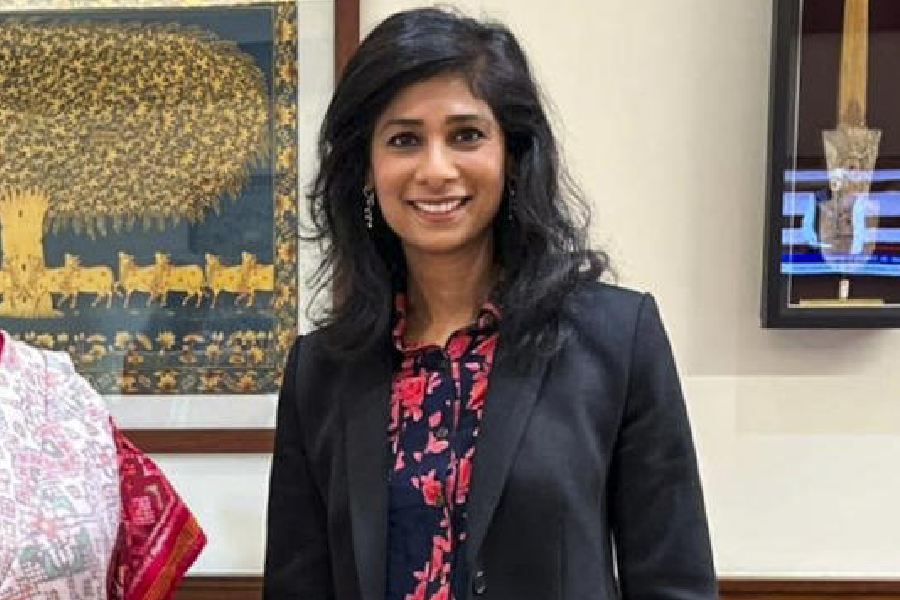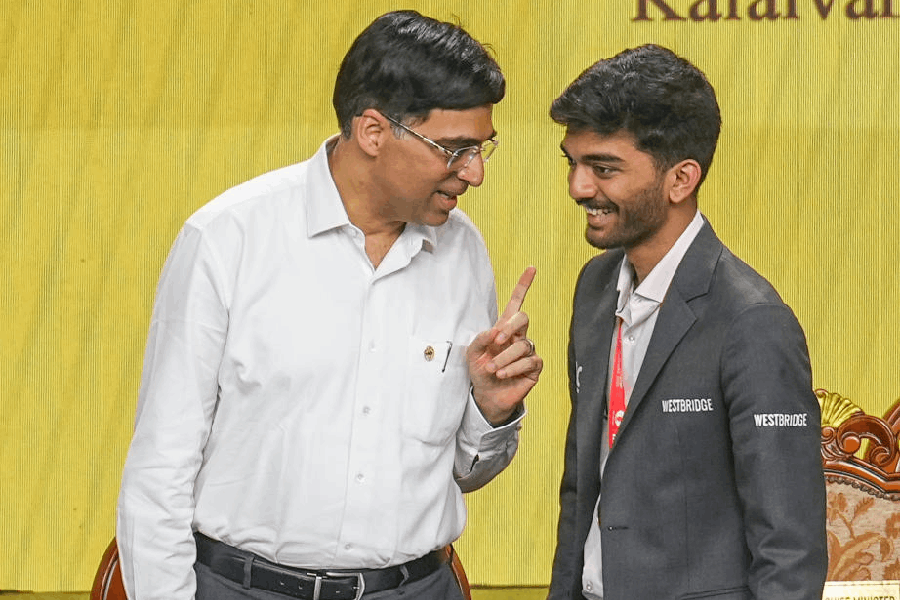Without the bindu, a black hole from which emerged light and energy, there would have been no life. Unless the Hindu philosophers thought of it, there would have been no Syed Haider Raza as well. Certainly not the Raza we have known for the past 85 years of his life. This master of Indian contemporary art, whose canvases sell for close to a crore today, spent an entire lifetime painting dots and concentric circles, albeit with hundreds of variations, often juxtaposed with other geometrical forms such as triangles. All of Raza’s works have a strong sense of design in which colours and shapes complement each. So they should have been hot favourites with weavers who could use them to produce works meant for everyday wear and tear. Till now, however, nobody had tried to translate Raza’s paintings into textiles.
K2, the gallery at Lansdowne Terrace, opened recently with an exhibition of tapestry inspired by Raza’s paintings. Raza uses primary colours such as red, yellow and blue and, occasionally, green in his works. Black was also there; not the black of negation but a life force which aided creation. The master weaver, who remains unnamed, used the same shades and designs. At every stage of production, the pieces were taken to Raza for his approval. Finally, when everything was to his satisfaction, Raza signed each piece of tapestry. So, although he never created them with his own hands, they were as good as his own. His serigraphs were also there but they are not a patch on his paintings.
Soumitra Das
Late show
Srabosti, a reputed institution of Kathak dance, started its annual show almost an hour late at Gyan Manch on July 7. The traditional Ganesh vandana was the curtain-raiser, performed by the youngest students of the institution. This was followed by an audio-visual presentation of the group’s performance at the International Dance Festival held last September at St. Petersburg, although one wonders if this was necessary. Uttaran, which followed, told the story of a child artiste’s blossoming into a mature dancer. Sanjay Bhattacharya, as its choreographer, left his mark. So did the uniqueness of the costume. The first half of the function came to an end with a tarana and a bhav performed by Bhattacharya. He danced with a lot of grace. The second half of the show had “Mrigtrishna”, a dance drama which portrayed the misery of a child in today’s world. Thematically, it could offer nothing new to the audience, but the dancers were brilliant in their individual roles.
Sulagna Mukhopadhyay










